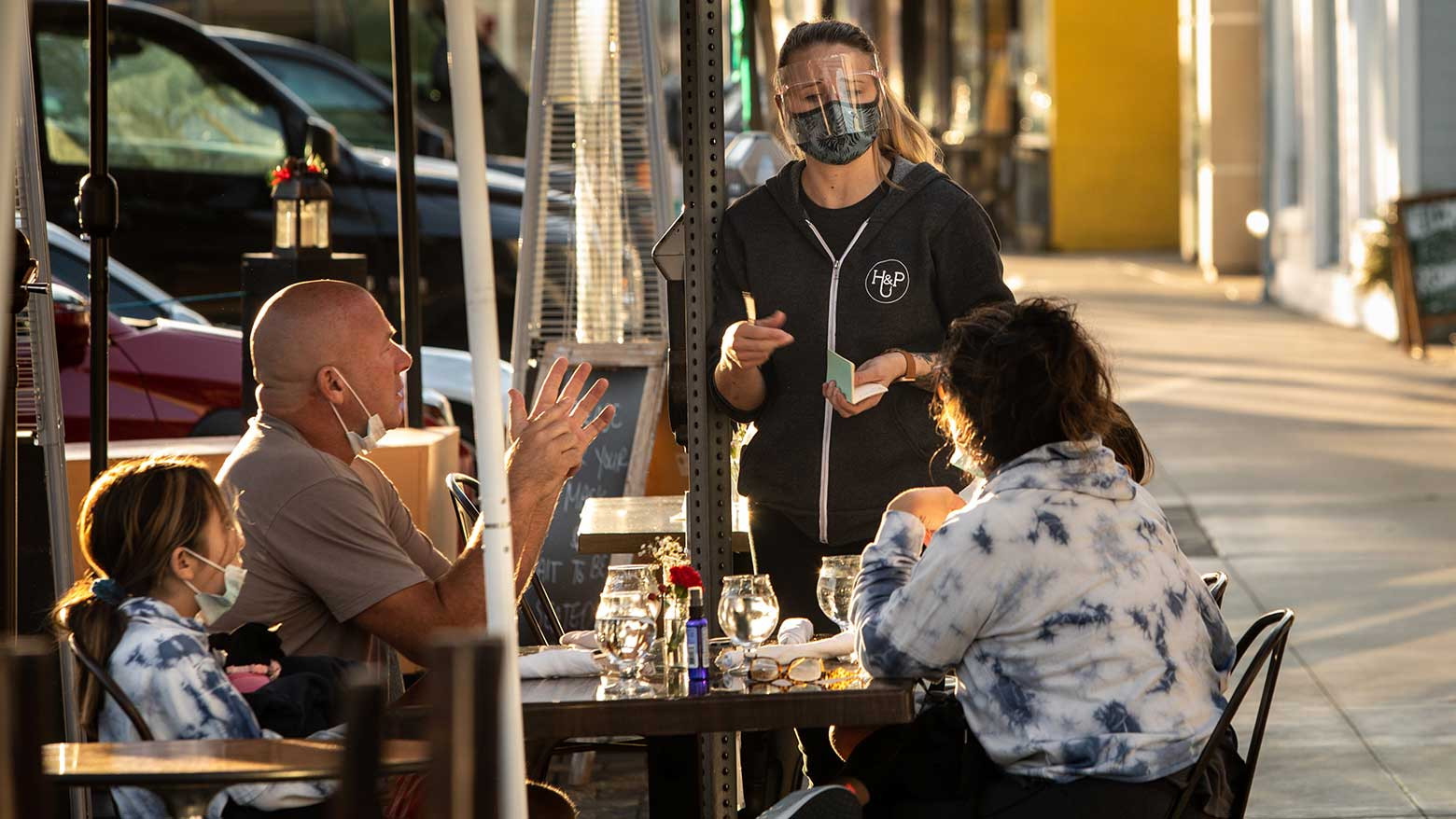The current coronavirus surge is by far the worst that California has seen – and alarm bells are ringing about how holiday gatherings could make the situation even more serious. Against that backdrop, cities, counties and the state have issued a patchwork of overlapping shutdown regulations.
One of those measures is the closure of outdoor dining, first ordered by Los Angeles County in late November and then expanded by the governor to cover most of the state. The rules ban all onsite dining, restricting restaurants to takeout or delivery.
Several jurisdictions are rebelling, with the city of Pasadena in LA County initially refusing to close its restaurants. The city of Beverly Hills unanimously passed a resolution demanding the right to reopen, insisting the restaurant shutdowns are “neither based on actual data nor science”, and the LA City Council voted 11-3 to reopen. Neither LA nor Beverly Hills have the power to overturn county or state orders.
Public health experts agree that outdoor dining can and does spread the virus. “Any time you meet with other people and contact them without a mask on, that increases risk,” warns Dr Megan Murray, a professor of global health and social medicine at Harvard. She says eating in an enclosed tent with other diners, common practice throughout southern California, is likely no safer than eating indoors.
Many Californians take a different view. Beverly Hills Mayor Lester Friedman notes the city council received almost 1,000 letters from residents opposed to the outdoor dining shutdown. Many of the letters assert, without evidence, that outdoor dining is safe.
“Do not shut down for a virus that’s safer than the flu!!” one person wrote, while another accused the governor of using COVID-19 to turn the state into an autocracy, though the regulations in question were ordered by a lower tier of government.
Some restaurateurs themselves are challenging the experts’ views. Shallom Berkman, the co-founder of Urth Caffé which has over two dozen outlets in the United States and Japan, claims that the virus is nowhere near as serious as people believe. “The deadliness of this coronavirus is not anything more than the common flu,” he says.
Jeffrey Merrihue, owner of Heroic Italian in Santa Monica, has a theory that corrupt backroom deals have allowed supermarkets to remain open while restaurants had to shut down outdoor dining. “Supermarket sales are up 39% in Santa Monica. They have big unions, they have lawyers. So supermarkets are protected, whether they're safe or not,” he says.
Community anger has been fueled by missteps by the authorities responsible for the shutdown regulations. California Governor Gavin Newsom attended a birthday party last month at an upscale Napa Valley restaurant, contradicting his own recommendation to limit social gatherings to members of no more than three households. San Francisco Mayor London Breed attended a party at the same restaurant the very next day.
Newsom found himself at the center of more controversy when it emerged that nearly $3 million in government loans, meant to provide relief to small businesses, have gone to companies he partly owns.
Meanwhile, the people of California are losing friends and loved ones at an alarming rate. The state is setting new records daily and on December 17, it reported 379 new fatalities, topping a previous high of 293 set the day before.
As the holiday season approaches, Governor Newsom says he has ordered 5,000 additional body bags for the state’s morgues, along with 60 refrigerated trucks to handle an overflow of victims.

